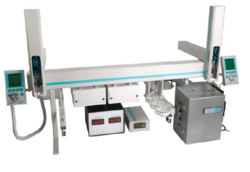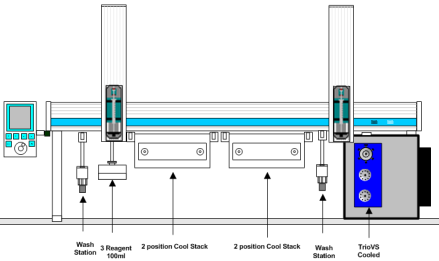Hydrogen Deuterium Exchange
From LEAP

| Hydrogen Deuterium Exchange |
| Application Type | |
| Sample Prep and Inject | |
| Application ID | |
| HD-X PAL | |
| Description | |
| Scheduling and Sample Prep for HD-X |
Contents |
Overview
H/D-X PAL™ is an easy-to-use, system that provides an automated process for the scheduling and experimental execution of H/D-X experimental workflow. By use of the advanced LEAP Shell scheduling software experimental design is simplified and reliable. Synchronous reagent addition and sample labeling steps are automatically scheduled to increase throughput and produce high quality data.
Protein structural studies
Information on protein structure can be obtained by one of 3 commonly used techniques:
1. Crystalography
2. NMR
3. HD Exchange
In cases where there is insufficient sample (NMR) or the protein will not crystalize, Hydrogen Deuterium exchange is the only option to obtain structural data. It relies on the accurate measurement of the degree of labeling of a protein by deuterated hydrogen during a precisely measured labeling interval. The deuterium is exchanged with hydrogen atoms on the exposed amine backbone of the protein and depending on the which regions are exposed and how the protein is folded, differences are seen in the MS spectra of the digested protein when compared with non-labelled proteins.
Labelling time is important (exposure time of the protein to Deuterium) as is prevention of "back-exchange" after the labelling has occured. This is the natural tendancy of normal hydrogen to replace the deuterium after the label is removed. This is minimized by reducing the temperature of the mixture to close to zero degress Celsius.
What is an HD-X experiment ?
Performing HD-X experiments manually involves setting up many labelling mixtures then quenching these mixtures at precisely timed intervals and injecting them onto a chilled injection valve to the LCMS. In most cases a range of label times is used, from 10 seconds to several hours. Sources of error (apart from normal liquidhandling inaccuracies) are timing errors, and degradation of sample due to "back-exchange". All of these sources of error are eliminated using the automated system described here.
What does the H/D-X PAL do?
The instrument has two cooled zones for sample storage and labelling. The injection valve is chilled to 1 degree Celsius and includes a solvent pre-chiller and column selection valve for in-line protein digestion.
Useful links
LEAP Product flyer Image:LEAP HDXAppNoteVer1.pdf
ASMS Interest Group - Hydrogen Exchange and Covalent Labeling [1]
LEAP Website H/D-x product description [2]

